Spotting Dupuytren’s Disease: Nodules, Cords, and When to See a Specialist
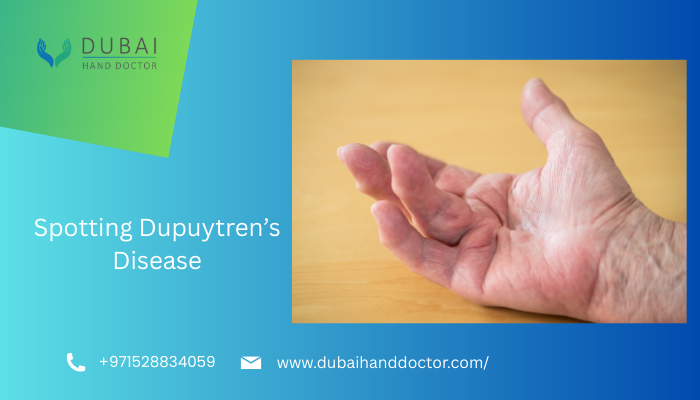
Do you feel a firm bump in your palm that doesn’t hurt but just won’t go away? Is your finger slowly bending toward your palm and refusing to straighten?
These might be early signs of Dupuytren’s contracture, a progressive condition affecting the connective tissue under the skin of your palm. Identification of the early warning signs is essential to managing the condition before it severely limits hand function.
In this blog, let us explore the initial symptoms, potential causes, and treatment options for Dupuytren’s contracture and understand when it’s time to consult a hand specialist.
What Is Dupuytren’s Contracture?
Dupuytren’s contracture (also called Dupuytren’s disease) is a fibroproliferative disorder of the hand in which the fascia, a layer of connective tissue under the skin, thickens and tightens over time.
It often starts with small, firm bumps in the palm, forming in the fascia, a stretchy layer of tissue beneath the skin that supports your hand. Over time, these bumps can thicken into cords that pull the fingers inward, making it hard or even impossible to straighten them fully.
The condition affects the ring and little finger. It can develop slowly over several years.
Early Signs and Symptoms of Dupuytren Contracture
Spotting the early signs and symptoms of Dupuytren contracture can make a big difference in treatment outcomes. The disease starts silently and painlessly.
Key signs can include:
- Nodules in the palm: Small, firm lumps form under the skin. Such nodules can be present on the base of fingers. They may feel tender initially, but are typically not painful.
- Thickened cords: As the disease progresses, nodules can develop into rope-like bands (cords) of fibrous tissue that extend into the fingers.
- Finger bending (contracture): Over time, the cords contract, pulling the fingers into a bent position. The most commonly affected digits are the ring and little fingers.
- Difficulty with hand movements: Tasks such as shaking hands, putting on gloves, or placing your hand on a flat surface can become challenging.
Dupuytren Contracture Causes
The exact cause of Dupuytren contracture is unknown but several risk factors have been identified:
- Genetics: It is a genetic condition and is common among European descent.
- Age and gender: Most cases occur after age 50, and men are more likely to be affected than women.
- Lifestyle factors: Alcoholism and smoking can increase the risk by contributing to microvascular damage.
- Medical conditions: Diabetes, epilepsy, and thyroid disorders have been linked to a higher prevalence of Dupuytren’s disease.
- Injury or overuse: Contrary to popular belief, repetitive hand trauma or overuse may aggravate symptoms in predisposed individuals.
How Is Dupuytren’s Contracture Diagnosed?
Diagnosis is primarily done through a physical examination. Examination includes:
- Palpation of the palm to detect nodules or cords
- ”Tabletop test”, checking whether your hand can lie flat
- Assessment of the range of motion of the fingers
Imaging such as ultrasound and MRI is used to assess the depth and extent of the fibrous tissue.
Dupuytren’s Contracture Treatment Options
Treatment methodology is chosen as per the severity of the contracture, rate of progression, and the functional limitations.
Here are the main treatment options:
- Observation
Immediate treatment may not be needed in mild cases without any functional impairment. Regular monitoring helps in detecting the progression.
- Needle Aponeurotomy
A minimally invasive procedure that uses a needle to break up the cord. It offers quick recovery but may have a higher recurrence rate.
- Enzyme Injections (Collagenase)
Injecting collagenase enzymes into the cord to weaken it. The cord can be manually broken. This treatment is FDA-approved but may not be widely available in all regions.
- Surgery (Fasciectomy)
Open surgery may be necessary in moderate to severe cases to remove the thickened fascia.
Can Dupuytren’s Contracture Be Prevented?
Unfortunately, there’s no known way to prevent Dupuytren’s contracture. But timely detection and intervention can help minimize its impact and preserve hand function for as long as possible.
Maintaining a healthy lifestyle, managing chronic conditions like diabetes, and avoiding smoking may reduce your risk.
When to See a Specialist
You don’t need to wait until your finger is fully bent to seek help.
If you notice any of the following signs and symptoms, it is time to schedule an appointment with a hand specialist:
- A persistent lump or nodule in the palm
- Difficulty placing hand flat on a table
- Changes in finger posture and stiffness
- Disabled hand function affecting the daily tasks
Why Choose Dr. Ehab Aldlyami for Hand Conditions in Dubai?
With more than 25 years of focused experience, Dr. Ehab Aldlyami is famously known as ‘’Dubai Hand Doctor’’, has dedicated his vast knowledge to hand and wrist surgery.
With his specialist training in the UK and experience leading care in Dubai, he brings world-class precision and compassion to helping patients regain comfort and confidence in their hands.
Being a specialized surgeon treating Dupuytren’s contracture using advanced surgical and non-surgical techniques, he has a patient-centered approach combining cutting-edge surgical techniques, ensuring your hands regain their strength, mobility, and confidence.
Whether you are at the early stages of Dupuytren’s contracture or already experiencing contractures, don’t wait for symptoms to worsen.
Take Action Today
Book your consultation with Dr. Ehab today and take the first step toward restoring full function and mobility in your hands.

Related Post

The hidden danger to the hand from phone and computer
The ease of modern technology has a downside. Using smartphones and computers can stress our
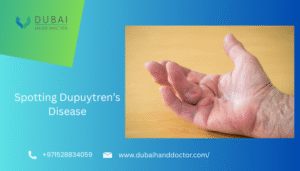
Spotting Dupuytren’s Disease: Nodules, Cords, and When to See a Specialist
Do you feel a firm bump in your palm that doesn’t hurt but just won’t
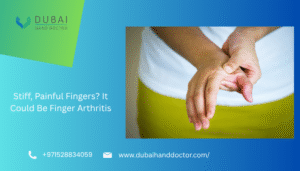
Stiff, Painful Fingers? It Could Be Finger Arthritis
Waking up with stiff, aching fingers or struggling to grip a coffee mug can transform
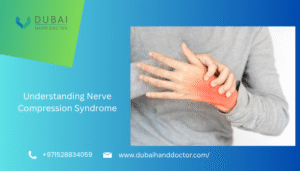
Understanding Nerve compression in the hand and wrist: From tingling to treatment
Are you experiencing persistent tingling, burning, or numbness in your hand or wrist? These could
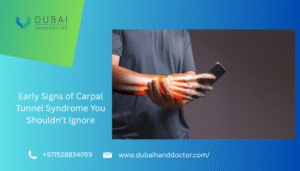
Early Signs of Carpal Tunnel Syndrome You Shouldn’t Ignore
Carpal Tunnel Syndrome (CTS) is a progressive condition significantly impacting the quality of life. It
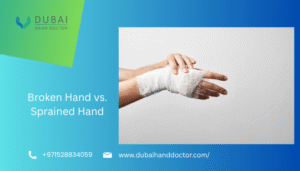
How To Tell If Your Hand Is Broken Or Just Sprained
Broken hand vs. sprained hand: How to tell the difference Ever experienced a sudden jolt




